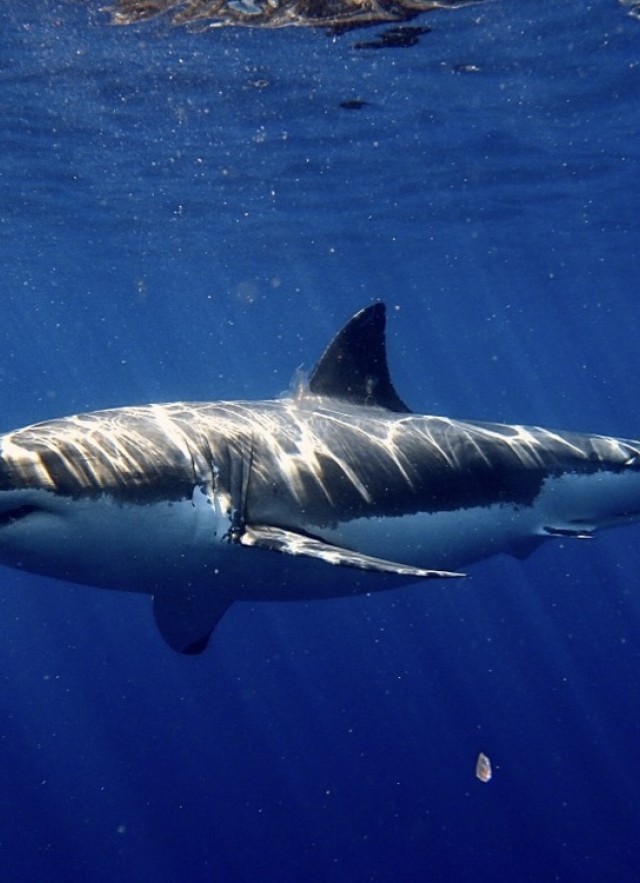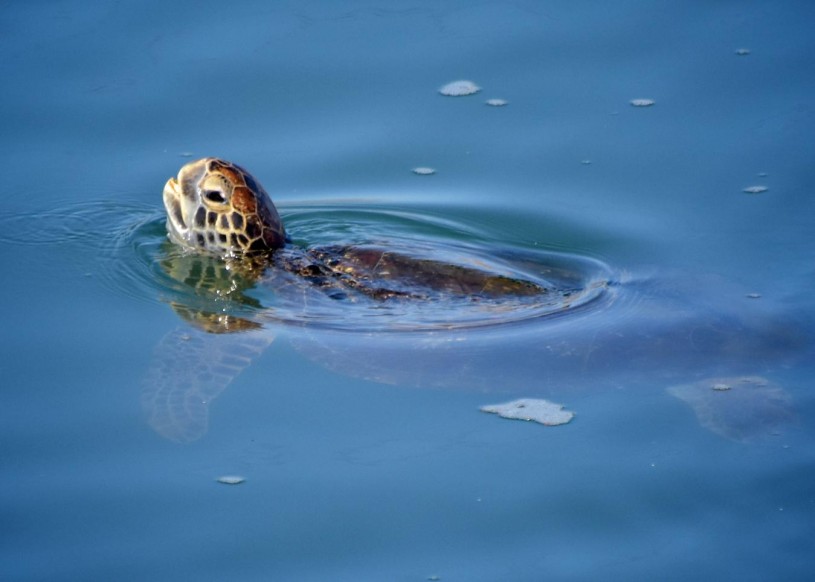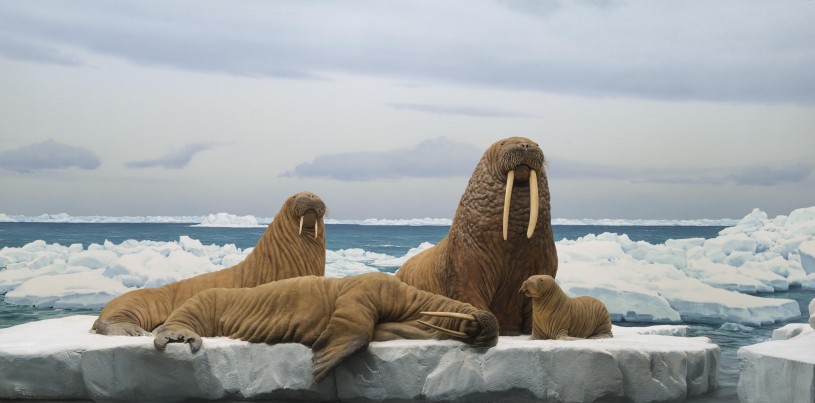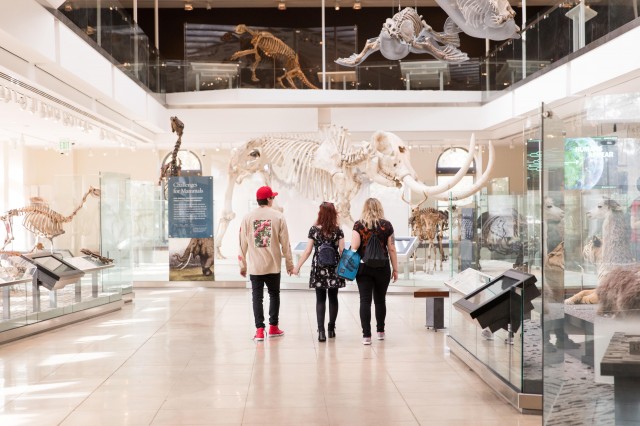Big Ocean Animal Alert
When one species declines or disappears, an entire ecosystem could be at risk of profound transformation or collapse.


It’s hard to miss the majestic fin whale skeleton suspended in the glass Otis Booth Pavilion at NHM. Passing underneath it can be an awe-inspiring experience, reminding us of our relative smallness in the tapestry of the natural world. A new study in Science Advances exposes just how large the absence of whales and other marine megafauna looms over our planet’s marine ecosystems.
The international team of scientists behind this groundbreaking study created a new metric called FUSE (functionally unique, specialized and endangered) to quantify each animal’s risk of extinction and importance to their ecosystem. The team looked at a myriad of big ocean animals, including sharks, octopuses, polar bears, and whales. This novel metric helped the team see a much bigger picture.

"Their newly proposed index, FUSE, can give policymakers an additional tool they can use to emphasize the level of protection or conservation efforts aimed at protecting the most vulnerable species," says Dr. Jorge Velez-Juarbe, Associate Curator of Marine Mammals at NHM who was not involved with the study.

Illuminating marine megafauna's functions within their respective ecosystems also sheds light on the depth of their connection to other species. So much of these animals' activities shape their habitat, from what they eat to where they make waste as they're moving nutrients across the oceans. Even where they die has a great effect: consider whale falls, where a carcass creates its own ecosystem on the ocean floor. Their extinctions could leave gaping holes in their environments, with some ecosystems collapsing entirely. Dr. Matt Davis, vertebrate paleontologist and exhibition developer at NHM, was part of the research team.
"These results mirror what we have already found for large animals on land: we are losing some of the most important species," said Davis. "That is important not just for their habitats in the ocean, but important for us here on land as well. Even if you don’t live near the beach, your life depends on the sea."

Sharks are the most threatened marine vertebrate group and perform unique vital roles: great whites control animal populations over vast stretches of ocean as they migrate while whale sharks are one of the only sharks to filter feed. As overfishing, pollution, plastic wastes, and climate change continue to threaten these species, scientists are looking at ways to mitigate this human-made disaster.
"Sharks have been in our oceans for hundreds of millions of years and have become an extremely important part of the ecosystem,” said Dr. Bill Ludt, Assistant Curator of Ichthyology at NHM, who was not involved with the study. “This study does an exemplary job of not only highlighting sharks’ importance, but also showing what may happen if we don't take the necessary actions now to preserve their biodiversity."
"We hope these findings inspire greater public awareness, ocean appreciation, and more effective conservation," Davis said. "Science can point the way but everyone will have to pitch in if we want to reach a more sustainable future."
You can read the full study here. https://advances.sciencemag.org/content/6/16/eaay7650
